Russell’s Viper
- December 17, 2023
- 0 comment
The Russell’s Viper, scientifically known as Daboia russelii, stands as one of the most venomous snakes found in South Asia. Named after herpetologist Patrick Russell, who played a significant role in the discovery and study of reptiles in the 18th century, this species is notorious for its potent venom and distinct physical characteristics. Russell’s Viper typically exhibits a robust and muscular build, with a distinctive triangular head, adorned with dark, distinctive markings. Its coloration varies, ranging from shades of brown to gray, often accompanied by a series of irregular dark bands along its body. This serpent is predominantly found in a variety of habitats, including grasslands, shrublands, and agricultural areas, making it a versatile and adaptable species.

Known for its aggressive nature, the Russell’s Viper is responsible for numerous snakebite incidents, posing a serious threat to human populations in its native range. The venom of this snake contains a potent combination of toxins that can lead to severe symptoms, including tissue damage, bleeding, and organ failure. Swift medical intervention is crucial in the case of a Russell’s Viper bite, as antivenom is the primary treatment to counteract the venom’s effects. Despite its potentially dangerous nature, the Russell’s Viper plays a vital role in maintaining ecological balance by controlling rodent populations. Conservation efforts strive to raise awareness about coexistence and reduce snakebite incidents through education and healthcare initiatives in regions where this viper is prevalent.
| Attribute | Details |
|---|---|
| Scientific Name | Daboia russelii |
| Common Name | Russell’s Viper |
| Family | Viperidae |
| Length | 90 to 150 cm (35 to 59 inches) |
| Weight | Up to 4 kg (8.8 lbs) |
| Coloration | Varied shades of brown or gray with dark bands |
| Head Shape | Triangular with distinct markings |
| Habitat | Grasslands, shrublands, agricultural areas |
| Geographic Range | South Asia, including India, Pakistan, Sri Lanka, Bangladesh |
| Venom | Hemotoxic and cytotoxic; causes tissue damage, bleeding, and organ failure |
| Behavior | Nocturnal, often aggressive when provoked |
| Reproduction | Viviparous (gives birth to live young) |
| Conservation Status | Not Evaluated (Varies by regional populations) |
A Diverse and Enduring Class of Vertebrates

Unveiling the Reptile Form
Reptiles have long captivated human curiosity with their diverse forms and adaptations, and among them, the Russell’s Viper (Daboia russelii) stands out as a fascinating and enigmatic species. From its physical characteristics to its ecological roles, this viper embodies the intricacies of reptilian life.
Scaled Skin for Protection and Thermoregulation
At the heart of the Russell’s Viper’s anatomy lies its scaled skin, a remarkable adaptation that serves both protective and thermoregulatory functions. These scales provide a tough outer layer, shielding the serpent from environmental hazards while aiding in the retention of body heat.
Ectothermic Physiology and Adaptation to Temperature
As an ectothermic creature, the Russell’s Viper relies on external sources to regulate its body temperature. This adaptation enables it to thrive in a range of environments, from sun-drenched landscapes to cooler shaded areas, showcasing the versatility of reptilian physiology.
Skull Structure and Diverse Dental Adaptations
The viper’s triangular head and distinct markings contribute to its unmistakable appearance. Examining the skull structure and dental adaptations reveals the sophisticated mechanisms behind its predatory prowess, emphasizing the importance of these features in its survival strategies.
Limb Variations and Locomotion Strategies
While limbless, the Russell’s Viper employs a unique mode of locomotion. The absence of limbs doesn’t hinder its ability to navigate diverse terrains, showcasing the adaptability of reptiles in their movement and survival.
Exploring the Reptile Habitat and Distribution

Thriving in Terrestrial, Aquatic, and Arboreal Environments
The Russell’s Viper exhibits a remarkable versatility in its choice of habitats, ranging from terrestrial landscapes to aquatic ecosystems and even arboreal environments. This adaptability contributes to its widespread distribution across diverse geographic regions.
Adapting to Diverse Ecosystems Worldwide
From the arid deserts to lush rainforests, towering mountains to murky swamps, the Russell’s Viper has established its presence in a spectrum of ecosystems. This reptile’s ability to adapt to various surroundings underscores its importance in maintaining ecological balance.
Geographic Distribution and Endemism
Concentration in Tropical Regions and Biodiversity Hotspots
The viper’s geographic distribution spans South Asia, with concentrations in tropical regions and biodiversity hotspots. Understanding the nuances of its endemic presence sheds light on the broader ecological significance of this species within its native range.

Delving into the Reptile Diet and Hunting Strategies
Carnivorous, Herbivorous, and Omnivorous Reptile Diets

Russell’s Viper, like many reptiles, adheres to a primarily carnivorous diet. Exploring the nuances of its feeding habits reveals the varied dietary preferences within the reptilian realm, offering insights into the intricacies of food web dynamics.
Prey Selection and Hunting Techniques
The viper employs a range of hunting techniques, from ambush strategies to pursuit, highlighting the adaptability of its predatory behavior. Examining the intricacies of prey selection provides a glimpse into the ecological interactions that shape reptilian ecosystems.
Ambush, Pursuit, and Specialized Adaptations
The Russell’s Viper’s hunting strategies include both ambush and pursuit, showcasing a dynamic repertoire of behaviors. Specialized adaptations further enhance its efficiency as a predator, allowing it to navigate and thrive within its ecological niche.

Symbiotic Relationships and Food Chains
Reptile Roles in Ecosystem Balance and Nutrient Cycling
Reptiles, including the Russell’s Viper, play vital roles in maintaining ecosystem balance. Their interactions with other species, both as predators and prey, contribute to the intricate web of life, highlighting the interconnected nature of biodiversity and nutrient cycling.
Reproduction and Life Cycle of Reptiles
Oviparous and Viviparous Reproduction
The reproductive strategies of the Russell’s Viper include both oviparous and viviparous methods, offering a fascinating glimpse into the diversity of reptilian reproductive biology. Understanding these processes unravels the complexities of the species’ life cycle.
Egg-Laying Strategies and Parental Care
Nesting sites, incubation periods, and hatchling survival are crucial aspects of the Russell’s Viper’s reproductive journey. Examining the species’ egg-laying strategies and parental care sheds light on the challenges and adaptations involved in ensuring the survival of the next generation.

Conservation Status and Threats to Reptiles

Facing Habitat Loss, Hunting, and Illegal Wildlife Trade
Reptiles, including the Russell’s Viper, face numerous threats in the contemporary world. Habitat loss, hunting, and illegal wildlife trade pose significant challenges to the conservation of these fascinating creatures, warranting urgent attention to mitigate these risks.
Human Encroachment and Climate Change Impacts
The encroachment of human activities and the impacts of climate change further compound the challenges faced by reptiles. Understanding the intricate relationships between these factors is crucial for formulating effective conservation strategies to safeguard the Russell’s Viper and its counterparts.
Conservation Efforts Underway
Protected Species, International Agreements, and Habitat Preservation
Efforts to conserve reptiles like the Russell’s Viper involve the protection of vulnerable species, international agreements, and initiatives aimed at preserving their natural habitats. These strategies, coupled with public awareness and education, form the foundation of ongoing conservation endeavors.
Different Species
Daboia russelii russelii
This is the nominate subspecies and is commonly found in the Indian subcontinent, including regions of India, Pakistan, Sri Lanka, and Bangladesh.


Daboia russelii siamensis
This subspecies is found in Southeast Asia, including countries like Thailand, Cambodia, Vietnam, and Laos.
Conclusion
In conclusion, the Russell’s Viper emerges as a captivating representative of the diverse and enduring class of reptiles. From its unique physical adaptations to its crucial ecological roles, this species invites exploration into the complex and interconnected web of life, underscoring the importance of conservation efforts to ensure the survival of these remarkable creatures in our ever-changing world.
Frequently Asked Questions (FAQs)
- What is Russell’s Viper?
Russell’s Viper (Daboia russelii) is a venomous snake found in South Asia, known for its potent venom and distinctive physical features. - Where is Russell’s Viper found?
This species is primarily found in South Asian countries, including India, Pakistan, Sri Lanka, and Bangladesh. - What does Russell’s Viper look like?
Russell’s Viper typically has a robust build with a triangular head and varied coloration, ranging from brown to gray, adorned with dark bands. - Is Russell’s Viper venomous?
Yes, Russell’s Viper is highly venomous. Its venom contains a combination of toxins that can lead to severe symptoms, including tissue damage and organ failure. - What is the habitat of Russell’s Viper?
Russell’s Viper is adaptable and can be found in a range of habitats, including grasslands, shrublands, and agricultural areas. - How does Russell’s Viper hunt for prey?
The viper employs various hunting strategies, including ambush and pursuit, and it primarily preys on small mammals and birds. - What should I do if bitten by a Russell’s Viper?
Seek immediate medical attention. Russell’s Viper bites can be life-threatening, and antivenom is the primary treatment. - Are there different species of Russell’s Viper?
The commonly recognized species is Daboia russelii, but there are subspecies with variations in distribution, such as D. r. russelii and D. r. siamensis. - How can one differentiate Russell’s Viper from other snakes?
Key features include a triangular head, dark markings, and a robust build. However, accurate identification may require expertise and caution. - What is the conservation status of Russell’s Viper?
As of my last knowledge update in January 2022, the conservation status is not formally evaluated. However, snakes face threats like habitat loss and human-wildlife conflict.


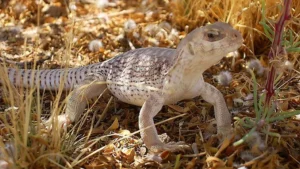
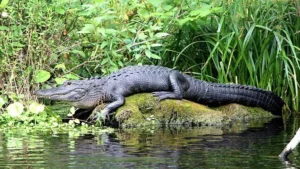
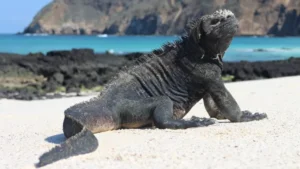

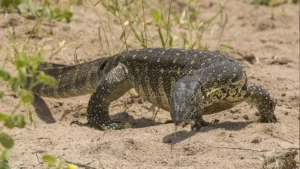



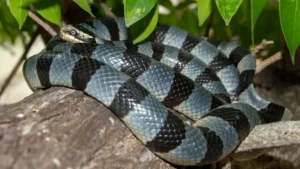
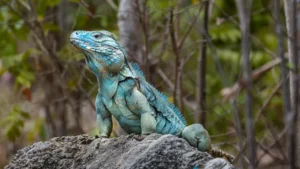
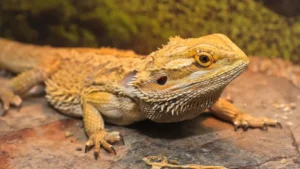
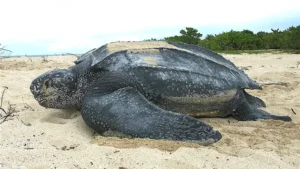
Leave your comment